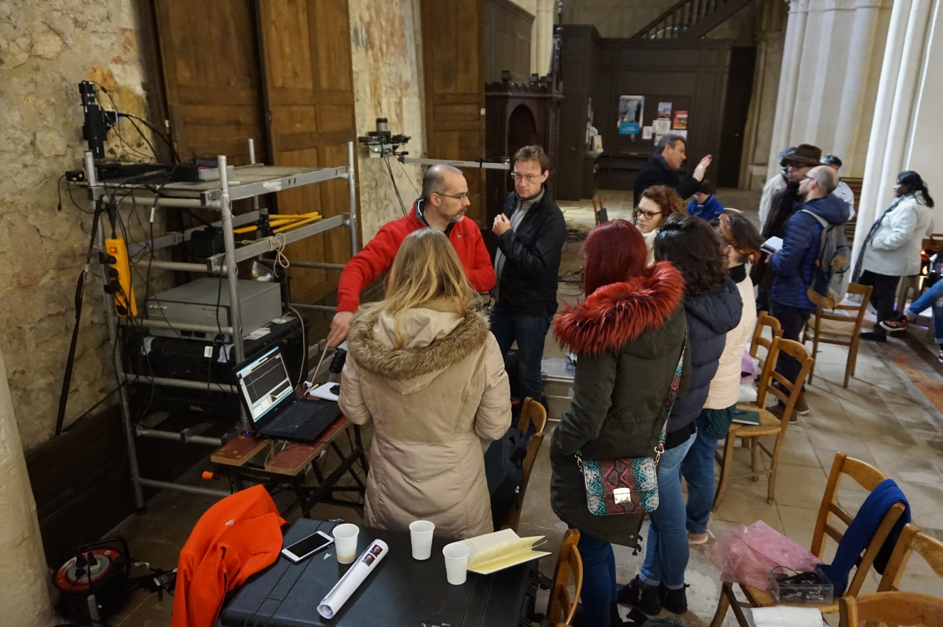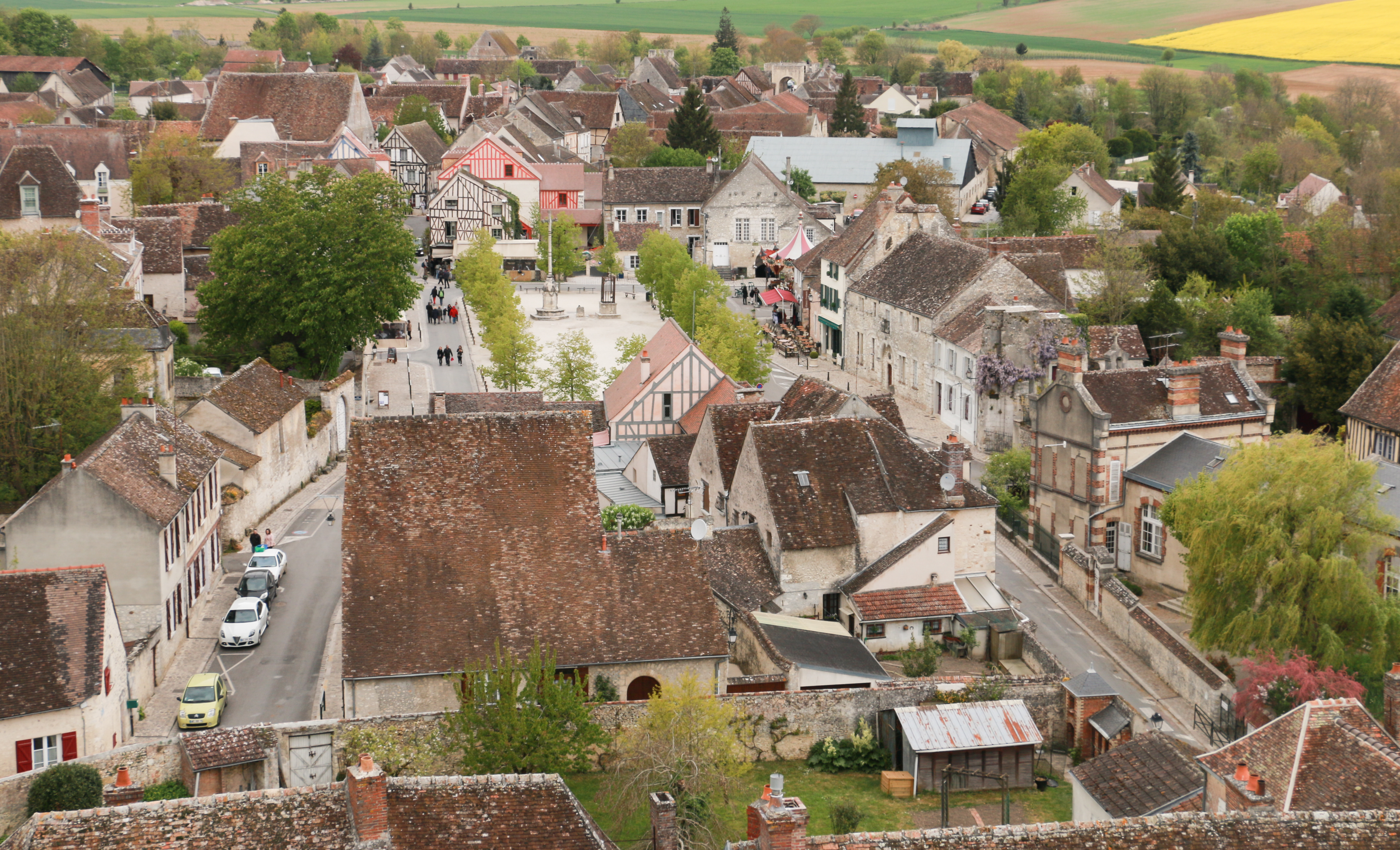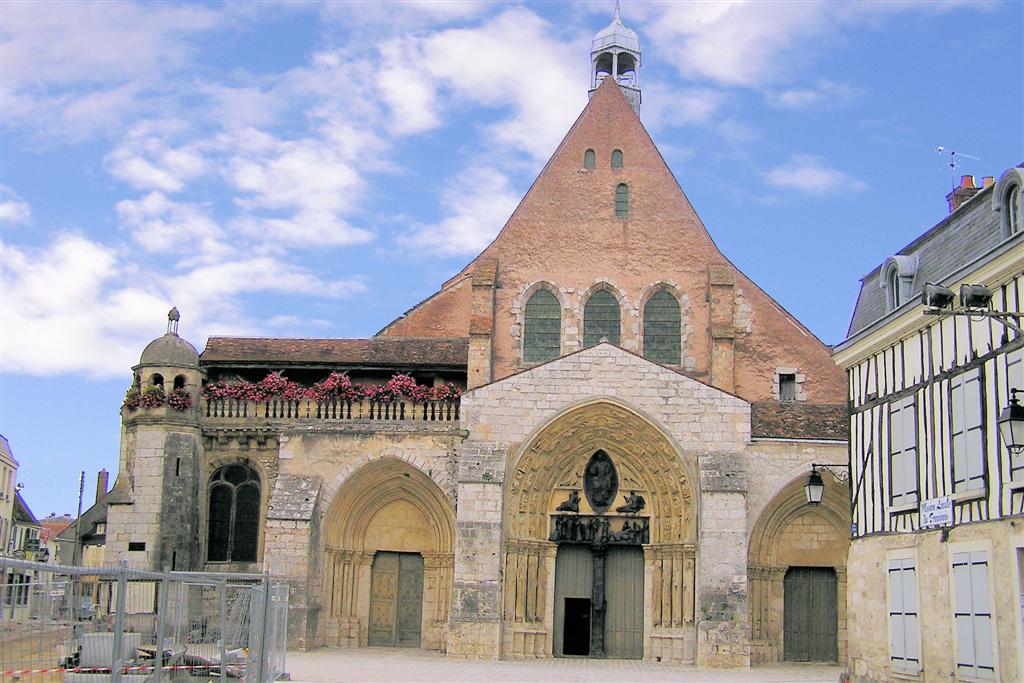


Training camp in France on “Heritage Science in Practice: Non-destructive tools for the diagnosis of paintings in immovable Cultural Heritage”
The National Centre for Scientific Research (CNRS) and the French Laboratory of Research on Historical Buildings (LRMH) are organizing the 2nd IPERION CH Training Camp, which took place at St Ayoul Church in Provins (France) between 19th and 23th March 2018.
The Training Camp offered the opportunity for a hands‐on training regarding the functioning of the MOLAB platform of IPERION CH, which gave access to advanced mobile analytical instrumentation for non‐invasive measurements on fragile easel paintings and wall paintings.
The Training Camp was based in a problem‐solving approach. Three areas were identified as relevant for the training camp into the Church. Two paintings from the 17th Century, one on canvas and the other one on wood were added to complete the panel of artworks.
For each area, some questions have been raised:
- The first zone has been used for an exercise in diagnosis regarding the different deterioration patterns resulting from capillary rises of water and subsequent salt efflorescence on the plaster/painting surface. The arising questions are: What is the water content in the wall? Can we localize the defaults? Are they still active?
- The second and third zone have been used to characterize wall paintings and try to answer questions: What is the composition of the pigments? What is the stratigraphy? Are there hidden figures behind the visible surface?
- The last zones have been situated on artworks. The following problems will be treated: What is the stratigraphy? Are the underdrawings present? Information on the previous restoration?
To inspect the areas, 7 different tools from the MOLAB have been used:
- Portable Nuclear Magnetic Resonance (NMR MOUSE), from the German MOLAB (RWTH)
- Terahertz Time Domain Imaging (THz-TDI), from the French MOLAB (CRC Team LRMH)
- Stimulated Infra-Red Thermography (SIRT), from the French MOLAB (CRC-Team LRMH)
- Integrated X Ray Diffraction and Fluorescence (XRD-XRF), from the French MOLAB (CNRS-C2RMF)
- Optical Coherence Tomography (OCT), from the Polish MOLAB (NCU)
- Digital Holographic Speckle Pattern Interferometry (DHSPI), from the Greek MOLAB (FORTH),
- NIR hyperspectral imaging, from the French MOLAB (CRC-Team CRCC)
18 participants applied for the training camps, from 12 countries (Italy, France, Norway, Great Britain, Greece, Sri Lanka, Russia, Cyprus, Croatia, Mexico, USA, France). The participants came from different horizons with different backgrounds (11 PhD students, 4 curators, 2 conservators and 1 senior scientist).
